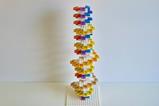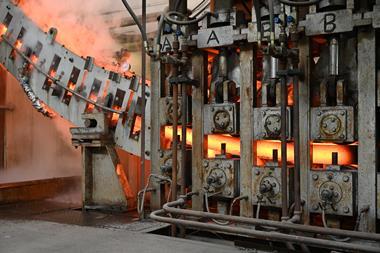Lawrence Berkeley National Laboratory (LBNL) is setting its sights on creating element 120 as part of a new US effort to discover the first elements in row eight of the periodic table. The move follows the breakdown of the US–Russian partnership, which had previously discovered the five heaviest elements, following the Russian invasion of Ukraine.
The superheavy elements are too unstable to be found in nature and are made, one atom at a time, through nuclear fusion. This is achieved by accelerating ions of one element at a target made of a heavier element, hoping the two nuclei combine. For the past 25 years, this has mainly been done (except for nihonium, discovered in Japan) in accelerators at the Joint Institute for Nuclear Research (JINR) in Dubna, Russia, in collaboration with US teams at Lawrence Livermore National Laboratory and Oak Ridge National Laboratory.
However, speaking exclusively to Chemistry World, JINR lead scientist Yuri Oganessian – the only person alive with an element, oganesson, named after him – confirmed that the war in Ukraine meant ‘the situation is actually not easy in the current turbulent environment’, and that sanctions meant his team ‘cannot cooperate with Oak Ridge and Livermore because JINR is located in Russia’.
Instead, the US has decided to go it alone. In its 2023 Long Range Plan for Nuclear Science, the US Department of Energy has outlined a ‘concerted US effort on the horizon’ that will attempt to create ‘new nuclei with a proton number heavier than anything ever formed’. This follows a white paper from the US Heavy Element Program last year, which proposed a US-led effort with ‘the 88-inch cyclotron at [Berkeley] … presently best suited to attempt new element research’.
Reiner Kruecken, division director for nuclear science at LBNL, confirmed the lab was preparing for an attempt to discover element 120 by firing a beam of titanium-50 at a californium-249 target. However, the program was still ‘in the process of establishing the capability to initiate a new element search’, Kruecken says. ‘An important step to get ready for this search is to test the use of Ti-50 reactions to produce known superheavy elements, which is ongoing.’ Chemistry World understands that, if this stage is successful, the hunt for element 120 is unlikely to begin until 2024 at the earliest.
If the lab succeeds in creating what would be the heaviest element yet discovered, it would end a 50-year drought for new elements at Berkeley. From the discovery of neptunium in 1940, experiments at Berkeley saw its teams – mainly led by chemist Glenn Seaborg – create 16 new elements. This included plutonium, as well as elements named after the lab and its staff, such as berkelium, californium, lawrencium and seaborgium.
The race for elements 119 and 120 is not limited to the US and Russia. Teams that have previously discovered elements at GSI Helmholtz Centre for Heavy Ion Research in Darmstadt, Germany and Riken in Japan are also attempting to synthesise new elements. However, the Japanese team are currently focusing their efforts on discovering element 119 by firing vanadium into curium, while the Germans cannot commit enough resources until they finish the construction of the Fair synchrotron, due for commissioning in 2025.
Update: The headline was changed on 11 October 2023 to make clear that it is the Lawrence Berkeley National Laboratory that will be conducting the search for new elements, not the University of California, Berkeley

















No comments yet